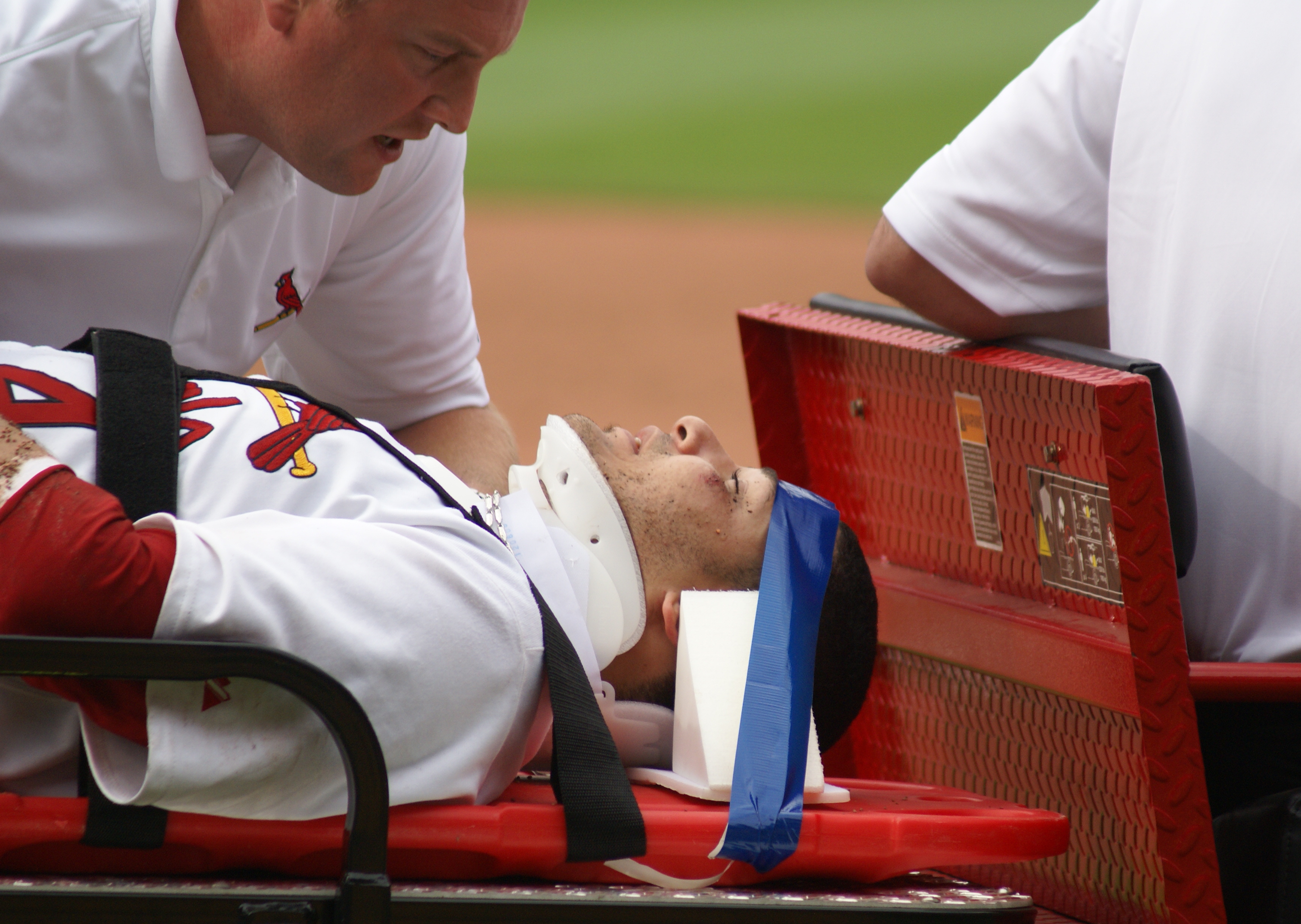
News that actor Will Smith will boycott the Oscars has overshadowed promotional coverage of his latest film, Concussion, which examines the effects of repeated head injury.
In the film, Smith plays the real-life neuropathologist Bennet Omalu, who first discovered chronic traumatic encephalopathy (CTE) in the brains of professional American football players. CTE results in dementia-like symptoms, and Omalu suggested that long-term concussive hits were the likely cause.
Repeated concussion has long been associated with neurological dysfunction, and was first described in boxers as “punch drunk” syndrome in 1928. A growing body of evidence now suggests the damage sustained over multiple hits, even when they are “sub-concussive” — apparently symptomless — may increase the risk of neurodegenerative diseases such as Alzheimer’s, Parkinson’s and CTE.
The link between concussion and irreversible brain injury is particularly troubling, especially given the dominance of Australia’s contact sporting culture.
A bump to the brain
Concussion is the most common and mild form of traumatic brain injury. The word comes from the Latin concutere, meaning “to shake violently”. Within the skull, the brain floats in a protective suspension of cerebrospinal fluid. Concussion occurs when either a direct impact or whiplash effect causes the brain to move inside the head and bump against the skull.
As a result, neurons are damaged and the brain may bruise at the site of impact. The required force is surprisingly minimal: losing consciousness is not a pre-requisite for concussion.
It’s estimated that 42 million people worldwide suffer a concussion each year. The majority result from falls or car accidents, and in many cases people don’t seek medical attention.
Concussion is difficult to manage because many cases occur without observable findings like disorientation or incoordination, and nothing shows up on structural imaging tests like CT or MRI. Diagnosis often depends on self-reporting of symptoms: the hallmarks are confusion, memory loss, and headache, which might not be immediately apparent.
Lasting damage
Research clearly shows that even one “silent” sub-concussive blow to the head triggers changes in how neurons function. In the short term, these changes don’t appear to have clear cognitive effects, but several studies point to consequences further down the track.
A study published in 2014, which followed 800,000 military conscripts over 30 years, found a statistically significant increase in the risk for developing young-onset, non-Alzheimer’s dementia after suffering one mild traumatic brain injury.
Another study, which analysed over 160,000 trauma patients, found that one mild traumatic brain injury in patients aged 65 and older was associated with a 22–26% increase in dementia risk over the following five to seven years.
Even clearer is the link between repeated blows and the risk of chronic neurological and mental illness. The evidence is overwhelming: repeated concussion has been linked to lower cognitive performance in amateur athletes.
In a survey of more than 2000 retired professional American footballers, players with a history of multiple concussions were three times more likely to have been diagnosed with clinical depression. A study of the death certificates of former American pro footballers found that the death rate from neurodegenerative diseases was three times higher than the general population.
CTE, a progressive neurodegenerative disease, was first discovered by Omalu in the early 2000s. Omalu had conducted a post-mortem examination of the brain of Mike Webster, an NFL player who had endured around 25,000 violent collisions during his career and died aged 50.
Under the microscope, Omalu discovered aggregates of tau protein, which is also one of the two proteins that accumulate in Alzheimer’s disease. Since then, CTE has been found in 76 of 79 former NFL players who donated their brains to research.
Early diagnostic methods needed
Repeated head trauma, however, doesn’t always lead to CTE. And the role that an individual’s genetics plays is still unclear. Currently, the only way to diagnose CTE is post-mortem, which means it’s impossible to determine how prevalent the condition is in the general population, or catch the condition in an “early” phase.
The next challenge for traumatic brain injury researchers is to develop imaging techniques that can identify CTE in living brains. Ideally, an early diagnostic test would detect changes in brain function following head trauma, enabling preventative measures to be put in place.
To protect groups at high risk of repeated head trauma, which includes contact sport athletes, victims of domestic violence, and military personnel, we urgently need to find better methods to diagnose concussion.
This article, co-authored by QBI's Dr Fatima Nasrallah and Donna Lu, was first published in The Conversation.
Contact: Dr Fatima Nasrallah, f.nasrallah@uq.edu.au, +61 7 3346 0322; QBI Communications, communications@qbi.uq.edu.au.



